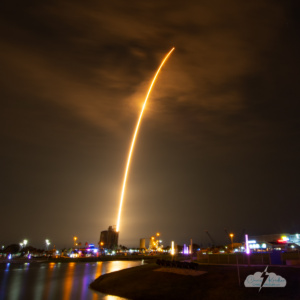I believe I am not the only one: Photographers spend a lot of time thinking about what they could’ve done better. Storm chasing is much the same way. If I had access to a time machine, there are several tornado events I’d like to revisit, reshoot and re-experience. Of course, it helps when you know where things will happen and when.

SpaceX launches a Globalstar communications satellite from Cape Canaveral early on June 19, 2022.
Rocket launches are challenging. Pads change. Rockets change. Trajectories change. And even if you’re using an app or dead reckoning or whatever, it’s sometimes hard to predict exactly where the rocket will appear in your photo. I’m so impressed by the photographers who do the math and get a rocket crossing the moon. I’m just trying to figure out where it’s going to leave the horizon and how the arc of a time exposure at night will frame objects in the foreground.
I set up at Port Canaveral by Exploration Tower. My GoPro timelapse would include the tower; I planned for my still image, shot with a Nikon D500, not to include it. But I knew the industrial towers across the water might be a problem; the rocket would go up around there, and one of the towers might block the horizon where it lifted off. And that’s exactly what happened. I should’ve stayed in position to get the reflection I wanted, but at the last moment I dashed away a few feet to shoot the still image and basically didn’t get anything I wanted. Sigh. That said, here’s the image so you can judge for yourself.
Complicating matters, a lightning storm in the distance taunted me, but without two different exposures and compositing the images, I didn’t see a great way to get the launch and the lightning in my photo. I did get a couple of stills with just the storm, soft and dim over the port’s bright lights.
The video, on the other hand, is pretty darn cool. The lightning storm offshore to the north strobes as the port’s lights flicker and change color. Suddenly, with a brilliant burst of light, the rocket launches upward, sets the clouds aglow, then arcs as it continues toward orbit. The whole video is less than a minute. I love all the color and light.
And I’m already considering how to frame the next one.
